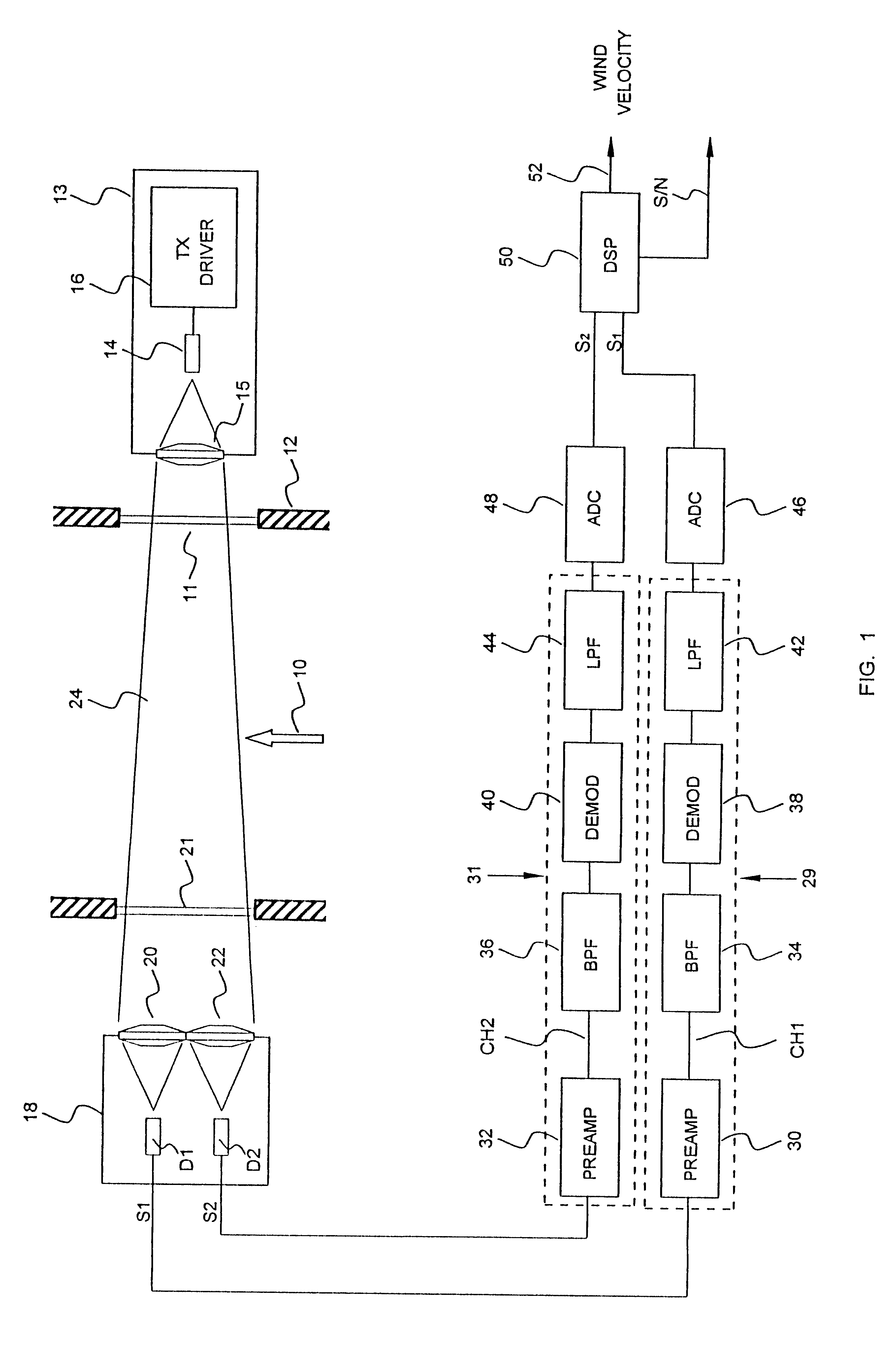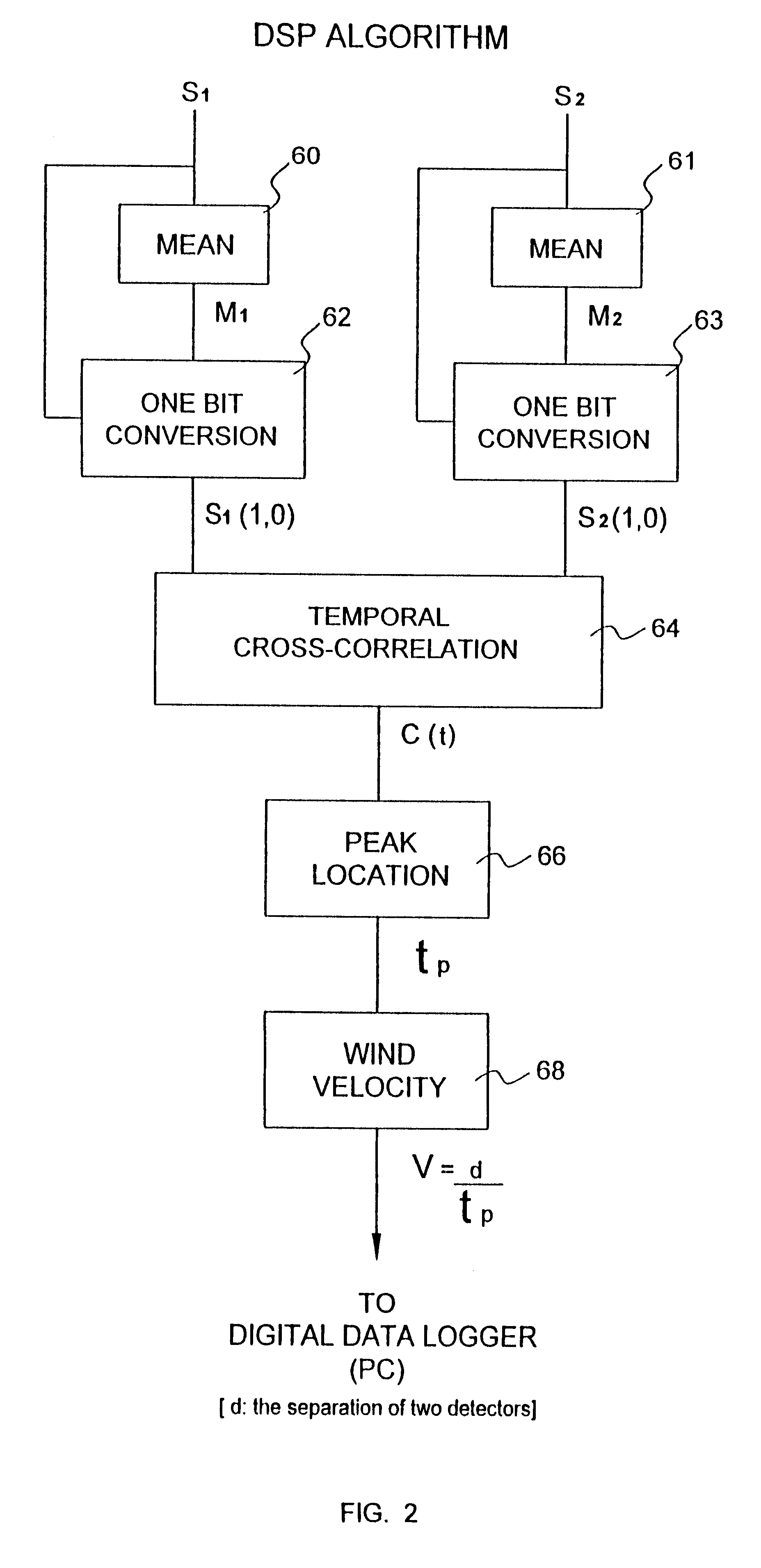Optical flow sensor
a flow sensor and optical technology, applied in the field of optical flow sensors, can solve the problems of inaccurate flow rate measurement, insufficient estimate of flow rate achieved with such instruments, and inability to meet industrial and environmental applications
- Summary
- Abstract
- Description
- Claims
- Application Information
AI Technical Summary
Problems solved by technology
Method used
Image
Examples
Embodiment Construction
FIG. 1 illustrates diagrammatically an optical flow sensor for measuring gas flow velocity in a predetermined linear direction, indicated by the arrow 10 within an elongated, vertically oriented chimney 12 which may, for example, have a diameter of about 10 feet and a length of 30 feet or more. Only a short section of the chimney 12 is shown in FIG. 1.
The optical flow sensor includes a transmitter 13 having a laser diode or an LED 14 located in front of the chimney window 11 and driven by a transmitter driver 16. The transmitter 13 includes an optically transparent collimating lens 15. A receiver 18 is located on the wall of the chimney 12 diametrically opposite the transmitter 13, and includes a pair of receiving lenses 20 and 22 which are in line-of-sight communication with an optical beam 24 produced by the transmitter 13. The beam 24 is directed diametrically across the center of the chimney 12 to intersect the path of gas flow 10. The beam 24 falls upon both of the lenses 20 an...
PUM
 Login to View More
Login to View More Abstract
Description
Claims
Application Information
 Login to View More
Login to View More - R&D
- Intellectual Property
- Life Sciences
- Materials
- Tech Scout
- Unparalleled Data Quality
- Higher Quality Content
- 60% Fewer Hallucinations
Browse by: Latest US Patents, China's latest patents, Technical Efficacy Thesaurus, Application Domain, Technology Topic, Popular Technical Reports.
© 2025 PatSnap. All rights reserved.Legal|Privacy policy|Modern Slavery Act Transparency Statement|Sitemap|About US| Contact US: help@patsnap.com



